
Late Island: A Hidden Gem in Tonga's Pristine Waters
Discover the untouched beauty of Late Island in Tonga, a secluded paradise offering pristine beaches, vibrant marine life, and breathtaking hiking trails.
Late Island, nestled in the heart of Tonga's stunning archipelago, is a paradise for nature lovers and adventure seekers alike. This uninhabited volcanic island offers an untouched landscape of lush forests, rugged cliffs, and serene beaches. The island's volcanic origin is evident in its dramatic topography, making it a fascinating destination for geology enthusiasts. The waters surrounding Late Island are teeming with marine life, making it a prime spot for snorkeling and diving. The coral reefs are vibrant and healthy, providing a colorful underwater spectacle. Visitors can expect to see an array of tropical fish, sea turtles, and even the occasional reef shark. The island is also a haven for bird watchers, with numerous species of seabirds nesting along its cliffs. Hiking on Late Island is an adventure in itself. The trails take you through dense rainforests, past bubbling hot springs, and up to the island's summit, where you'll be rewarded with breathtaking panoramic views of the Tongan archipelago. The island's seclusion ensures that you can enjoy these natural wonders in peace, far from the crowds of more popular tourist spots.
Local tips in Late Island
- Bring sturdy hiking shoes for the rugged trails.
- Pack enough water and snacks; there are no facilities on the island.
- Snorkeling gear is a must to explore the vibrant coral reefs.
- Visit during the dry season for the best weather conditions.
- Respect the local wildlife and natural environment; leave no trace.
Late Island: A Hidden Gem in Tonga's Pristine Waters
Late Island, nestled in the heart of Tonga's stunning archipelago, is a paradise for nature lovers and adventure seekers alike. This uninhabited volcanic island offers an untouched landscape of lush forests, rugged cliffs, and serene beaches. The island's volcanic origin is evident in its dramatic topography, making it a fascinating destination for geology enthusiasts. The waters surrounding Late Island are teeming with marine life, making it a prime spot for snorkeling and diving. The coral reefs are vibrant and healthy, providing a colorful underwater spectacle. Visitors can expect to see an array of tropical fish, sea turtles, and even the occasional reef shark. The island is also a haven for bird watchers, with numerous species of seabirds nesting along its cliffs. Hiking on Late Island is an adventure in itself. The trails take you through dense rainforests, past bubbling hot springs, and up to the island's summit, where you'll be rewarded with breathtaking panoramic views of the Tongan archipelago. The island's seclusion ensures that you can enjoy these natural wonders in peace, far from the crowds of more popular tourist spots.
When is the best time to go to Late Island?
Iconic landmarks you can’t miss
Mapu'a Vaea Blowholes
Discover the breathtaking Mapu'a Vaea Blowholes in Tonga, where nature's power creates stunning water spouts against a picturesque backdrop.
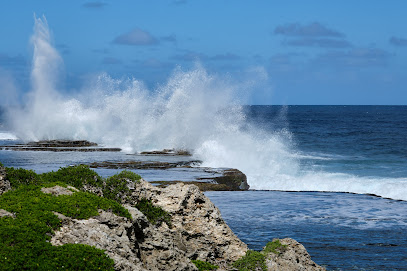
Tongatapu
Experience the breathtaking beauty and rich cultural heritage of Tongatapu, the enchanting main island of Tonga in the heart of Polynesia.
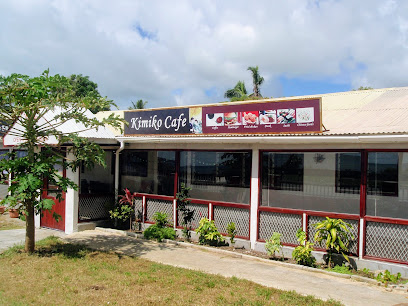
Royal Palace of Tonga
Discover the Royal Palace of Tonga: A stunning historical site and the official residence of the Tongan monarch, rich in culture and tradition.

Anahulu Cave
Uncover the enchanting beauty and cultural significance of Anahulu Cave, a must-see natural wonder in Haveluliku, Tonga.
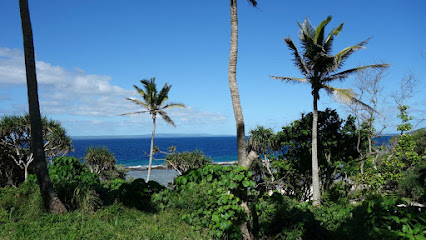
Royal Tombs
Discover the Royal Tombs in Nuku'alofa, a historical landmark showcasing Tonga's rich royal heritage and cultural significance.
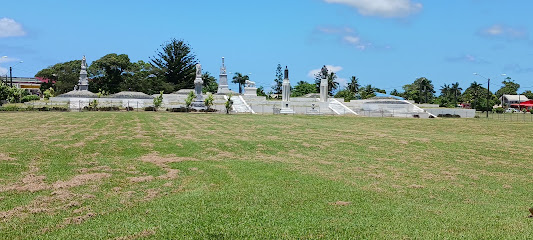
Tsunami Rock
Explore Tsunami Rock: A Stunning Natural Landmark in Tonga Offering Scenic Views and Rich Cultural Heritage.
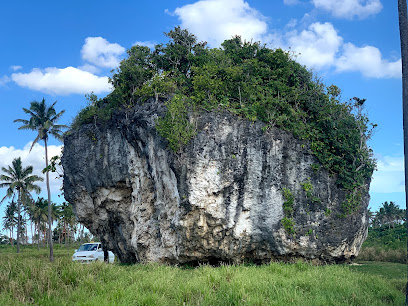
Ancient Tonga
Explore the heart of Tongan culture at Ancient Tonga, where history, art, and stunning landscapes come together in a captivating tourist attraction.
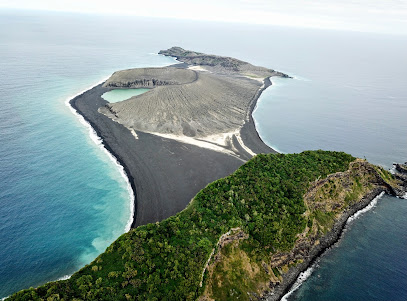
Ha'amonga 'a Maui Trilithon
Discover the enchanting Ha'amonga 'a Maui Trilithon, an ancient Tongan landmark embodying rich history and stunning natural beauty.
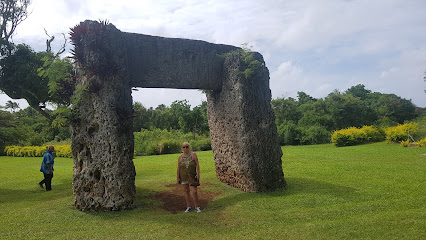
Nuku'alofa Tonga Temple
Discover the tranquility and architectural beauty of Nuku'alofa Tonga Temple, a sacred landmark for spiritual reflection and cultural insight in Tonga.
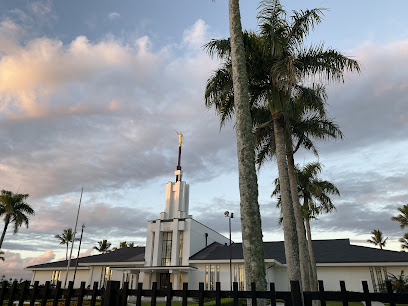
Simon's Place Motel
Discover the warmth of Tongan hospitality at Simon's Place Motel in Nuku'alofa, your cozy retreat for exploring Tonga's beauty.

House of Tonga
Discover the charm of Nuku'alofa at the House of Tonga, your ideal base for exploring Tongan culture and beauty.
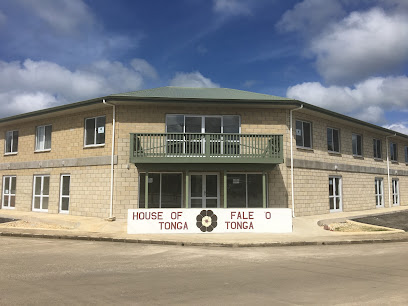
Captain Cook Landing Site
Explore Captain Cook Landing Site in Alaki, Tonga, a historical landmark where the famous explorer first arrived, surrounded by stunning landscapes.
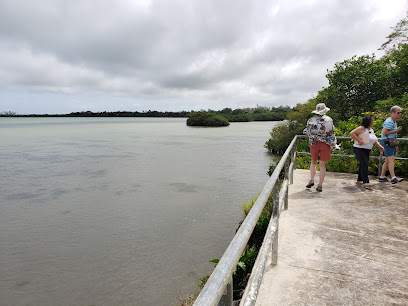
Paepae o Tele'a
Explore Paepae o Tele'a, Tonga's historic landmark that unveils the island's rich cultural heritage amidst stunning natural beauty.

Maka Fa'akinanga
Discover the cultural heart of Tonga at Maka Fa'akinanga, a historical landmark that showcases the island's rich heritage and breathtaking landscapes.
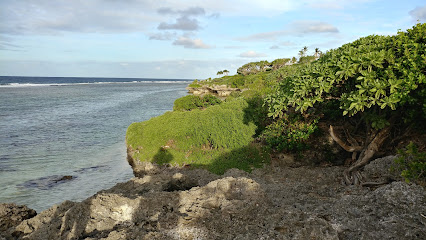
Hufangalupe
Discover the breathtaking beauty of Hufangalupe, a stunning bridge in Fua'amotu, Tonga, offering picturesque views and a glimpse into local culture.
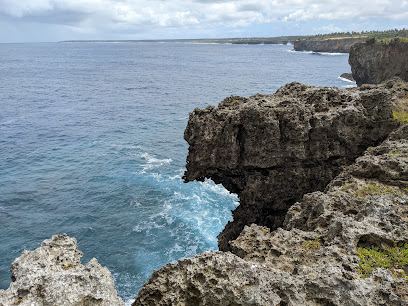
Unmissable attractions to see
Mapu'a Vaea Blowholes
Discover the breathtaking Mapu'a Vaea Blowholes in Tonga, where nature's power meets stunning coastal beauty.

Tongatapu
Explore Tongatapu, Tonga's largest island, where stunning beaches, rich culture, and ancient history await every traveler.

Royal Tombs
Explore the Royal Tombs of Tonga in Nuku'alofa, a captivating historical landmark reflecting the rich heritage of the Tongan monarchy.
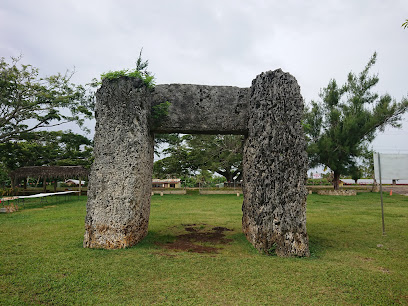
Tsunami Rock
Experience the majestic Tsunami Rock in Tonga, a stunning natural landmark rich in cultural significance and breathtaking views.

Ancient Tonga
Explore the rich cultural heritage and archaeological wonders of Ancient Tonga, a must-visit destination in Nuku'alofa.
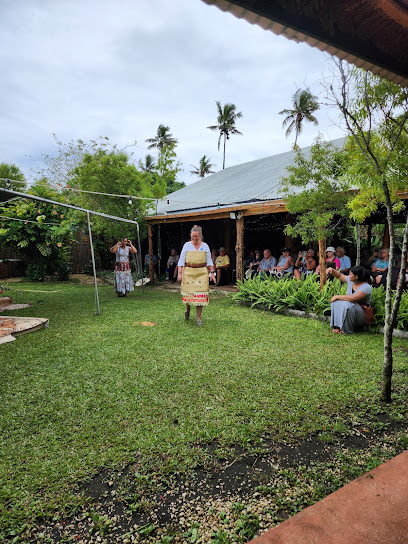
Ha'amonga 'a Maui Trilithon
Explore the fascinating Ha'amonga 'a Maui Trilithon, a historical landmark that showcases Tonga's rich cultural heritage and ancient architectural marvels.
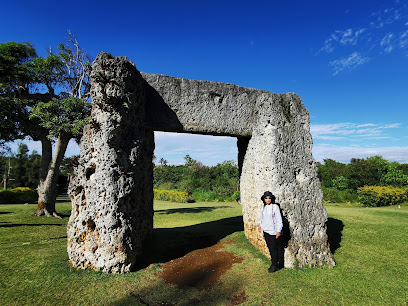
Paepae o Tele'a
Explore Paepae o Tele'a, a historical landmark in Mu'a, Tonga, and uncover the rich cultural heritage of the ancient Tongan civilization.
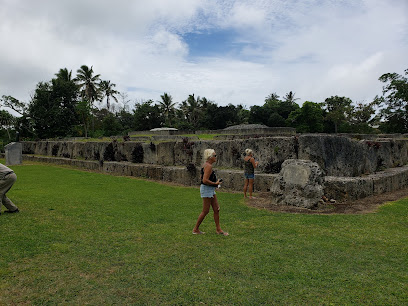
Tonga National Museum
Explore the heritage of Tonga at the National Museum, where history, culture, and tradition come alive in the heart of Nuku'alofa.
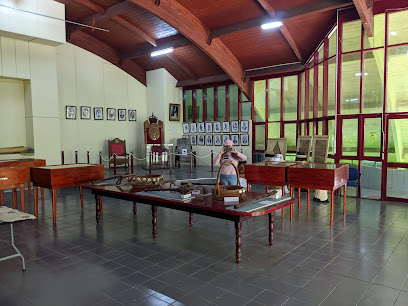
Maka Fa'akinanga
Explore Maka Fa'akinanga, a historical landmark in Niutoua, Tonga, where rich culture meets breathtaking landscapes.
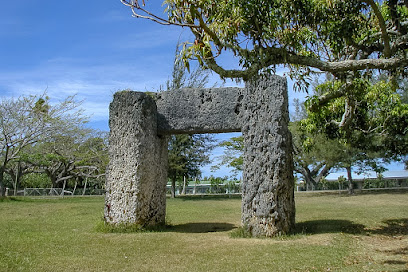
ʻEua National Park
'Eua National Park: Explore the untouched beauty and unique biodiversity of Tonga's serene national park, a paradise for nature lovers.
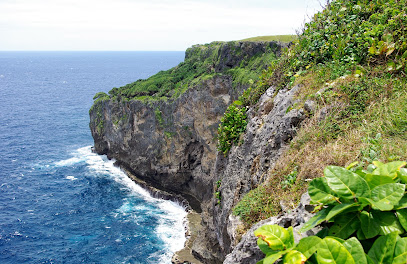
Hufangalupe
Discover the breathtaking beauty of Hufangalupe Bridge in Fua'amotu, Tonga, where nature meets architectural elegance in a serene island setting.
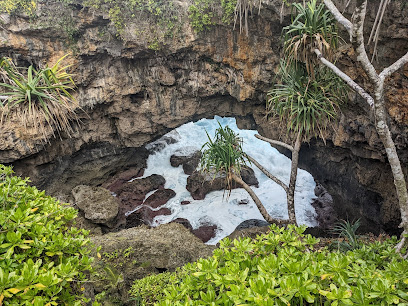
Whale Swim & Dive Tours
Experience the thrill of swimming with whales and diving into the vibrant marine life of Tonga at Whale Swim & Dive Tours in Nuku'alofa.
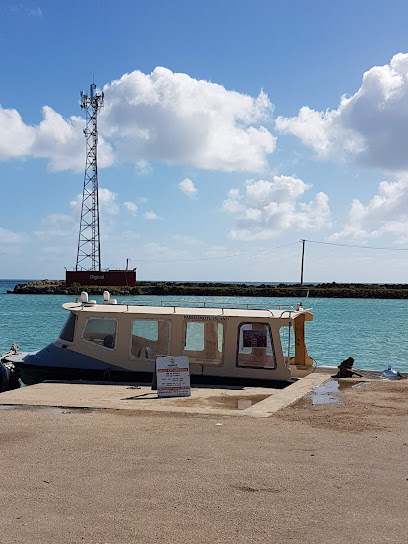
Essential places to dine
Coffee Post
Discover Coffee Post in Nuku'alofa: where exceptional Tongan coffee meets warm island hospitality in a cozy setting.
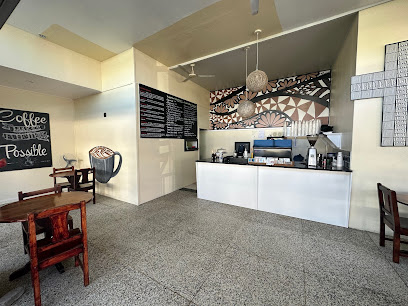
Little Italy Hotel
Discover comfort and authentic Italian cuisine at Little Italy Hotel in Nuku'alofa – your gateway to exploring Tongan culture.

Friends Cafe
Discover authentic Tongan flavors at Friends Cafe in Nuku'alofa – where every bite tells a story.
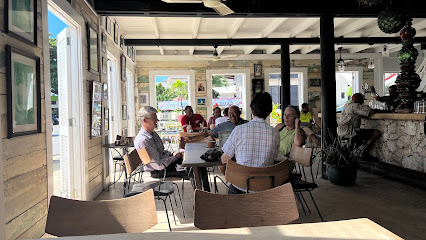
Cafe Escape
Discover Cafe Escape in Nuku'alofa: A culinary gem offering local flavors & exceptional coffee in a warm atmosphere perfect for tourists.
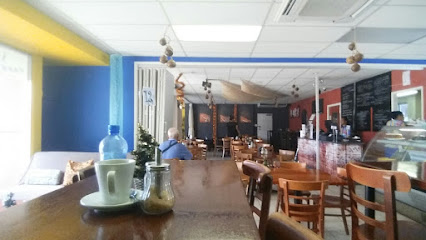
Chef Zero Restaurant
Experience authentic Tongan cuisine at Chef Zero Restaurant in Nuku'alofa - where every dish tells a story.
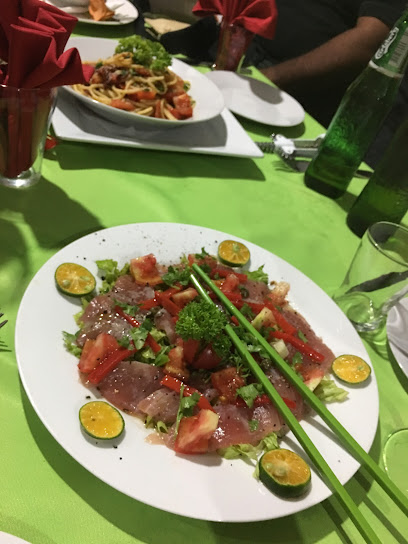
Waterfront Lodge
Discover tranquility at Waterfront Lodge in Nuku'alofa – where comfort meets stunning ocean views amidst Tongan charm.

The TOP Restaurant and Lounge
Discover culinary excellence at The TOP Restaurant and Lounge in Nuku'alofa—where local flavors meet global cuisine amidst breathtaking views.

Little Italy Pizzeria Restaurant
Discover authentic Italian cuisine at Little Italy Pizzeria Restaurant in Nuku'alofa - where every meal feels like a slice of home.
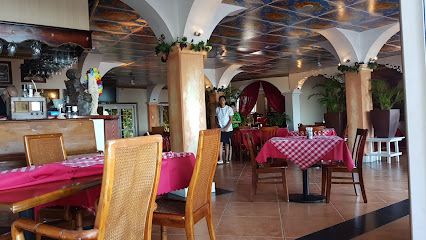
Vakaloa Beach Resort
Discover tranquility and adventure at Vakaloa Beach Resort in Kanokupolu—your perfect tropical getaway awaits!
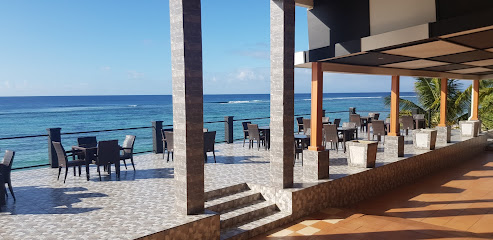
Vuna Wharf
Discover Vuna Wharf: A vibrant marina in Nuku'alofa offering stunning ocean views, fresh seafood delights, and cultural experiences.
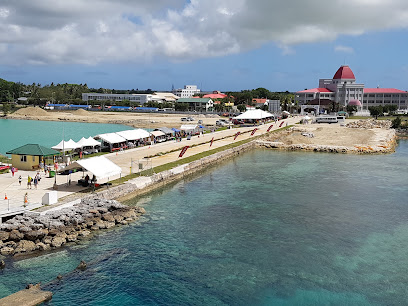
Mum's Cafe Nukualofa
Experience authentic Tongan cuisine at Mum's Cafe in Nuku'alofa - where every meal tells a story and every bite delights.
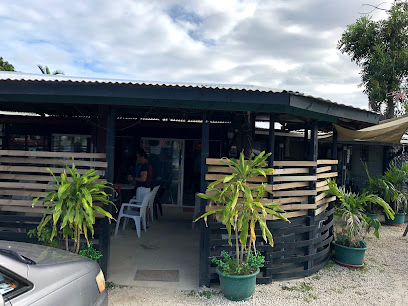
Tupu'anga Coffee Factory and Cafe
Experience authentic Tongan flavors at Tupu'anga Coffee Factory and Cafe in Nuku'alofa - where every cup tells a story.
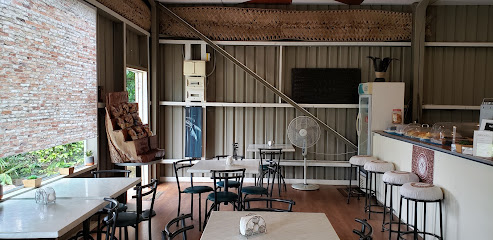
Young’s Kitchen
Experience authentic Tongan cuisine at Young's Kitchen, where every dish tells a story and every visit feels like home.
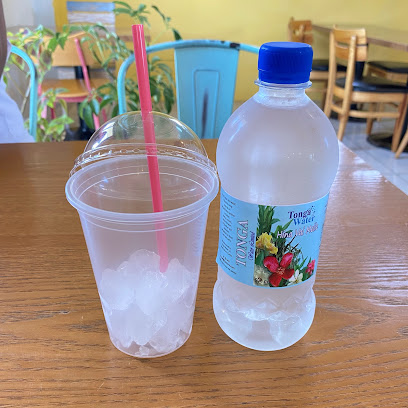
The Waterfront Cafe
Experience authentic Tongan flavors at The Waterfront Cafe with stunning ocean views in Nuku'alofa.

Nauti Ruby's Bar & Restaurant
Experience authentic Tongan cuisine at Nauti Ruby's Bar & Restaurant with stunning waterfront views and vibrant local culture.
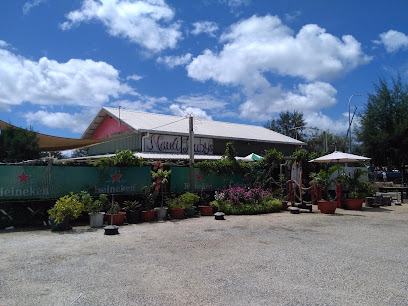
Markets, malls and hidden boutiques
Ancient Tonga
Explore Ancient Tonga, a cultural gem in Nuku'alofa, where history and tradition come alive through captivating exhibits and local craftsmanship.
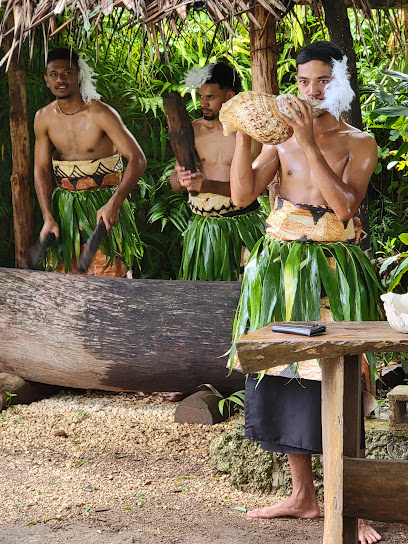
Talamahu Market
Discover the vibrant Talamahu Market in Nuku'alofa, where fresh Tongan produce meets rich local culture.
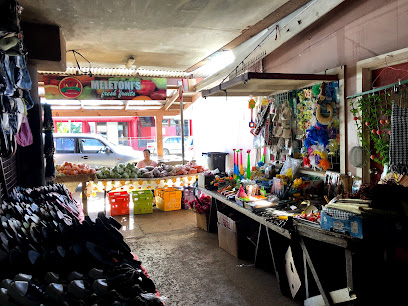
Vuna Wharf
Experience the vibrant culture and breathtaking views at Vuna Wharf in Nuku'alofa, the gateway to adventure in Tonga.
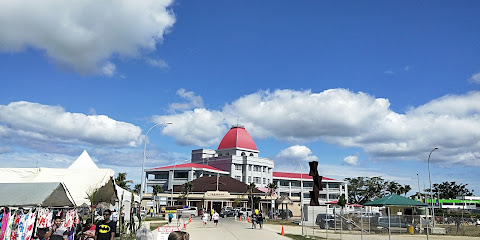
Molisi Supermarket
Discover the flavors of Tonga at Molisi Supermarket, your local grocery hub in Nuku'alofa offering fresh produce and traditional delicacies.
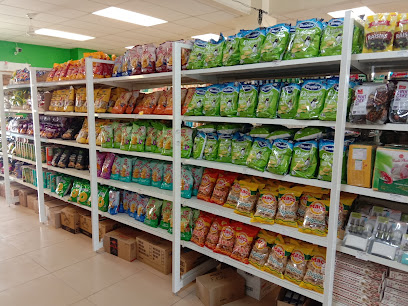
Hiki 'O Tonga
Discover the essence of Tongan shopping at Hiki 'O Tonga, a vibrant mall in Nuku'alofa offering local crafts, souvenirs, and a taste of island culture.
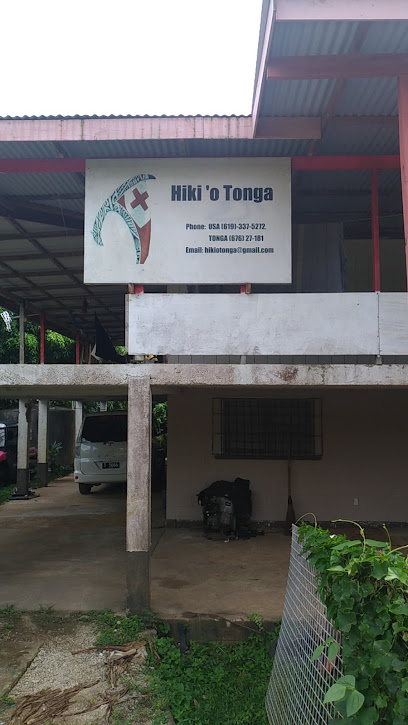
EZ TONGA ONLINE SHOPPING
Experience the convenience of EZ Tonga Online Shopping - your gateway to Tongan products, local delicacies, and unique souvenirs.

Si'i Kae Ola Supermarket
Visit Si'i Kae Ola Supermarket for a taste of local culture and everyday essentials in Nuku'alofa, Tonga.
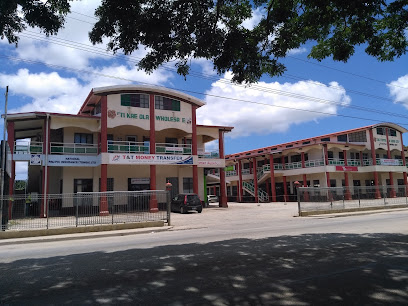
Langafonua Handicraft Centre and Gallery
Explore the vibrant world of Tongan crafts at Langafonua Handicraft Centre and Gallery, where culture meets artistry in every handmade piece.
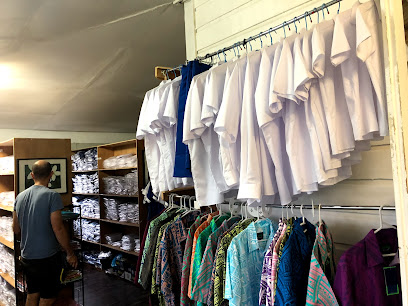
Friendly Island Bookshop
Explore Tonga's culture through literature at the Friendly Island Bookshop in Nuku'alofa - a haven for book lovers and cultural enthusiasts.
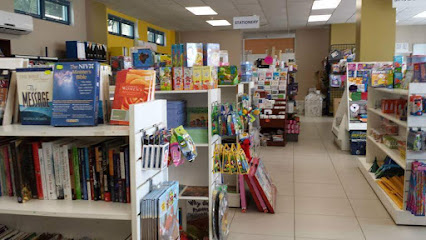
Leiola
Explore the rich array of local and international beers at Leiola, the ultimate beer store in the heart of Nuku'alofa.
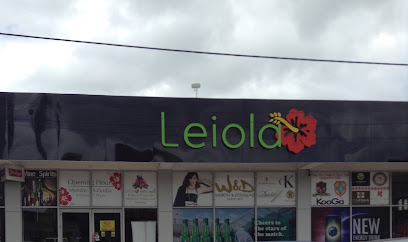
Fakafeta'i Store
Discover the warmth and quality of Tongan hospitality at Fakafeta'i Store, a charming general store in Nuku'alofa.

Le-Ata Tonga
Explore unique clothing and island-inspired fashion at Le-Ata Tonga, the must-visit boutique in Nuku'alofa for every tourist.

Lion Liquor
Experience the local beverage culture at Lion Liquor, Nuku'alofa's top beer distributor and supermarket for a taste of Tonga.
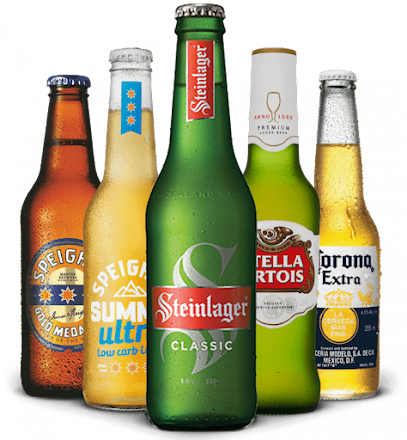
FORTUNE ISLAND SHOPPING CENTER
Discover local treasures and indulge in Tongan culture at Fortune Island Shopping Center in Nuku'alofa.
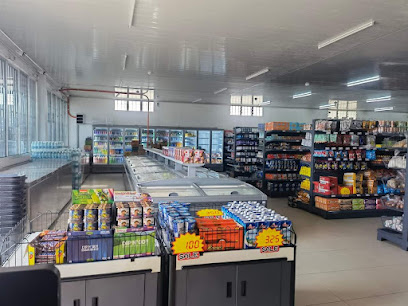
Lalita Store
Explore Lalita Store in Nuku'alofa for the best electronics and gadgets, ensuring your travels in Tonga are seamless and enjoyable.

Essential bars & hidden hideouts
Tanoa International Dateline Hotel
Discover unparalleled comfort and authentic Tongan hospitality at Tanoa International Dateline Hotel, your perfect getaway in Nuku'alofa.

Little Italy Hotel
Discover the authentic taste of Italy at Little Italy Hotel, a charming restaurant and hotel in Nuku'alofa, Tonga, perfect for unforgettable culinary experiences.

Royal Palace of Tonga
Explore the Royal Palace of Tonga, a majestic symbol of Tongan heritage and monarchy nestled in the heart of Nuku'alofa.
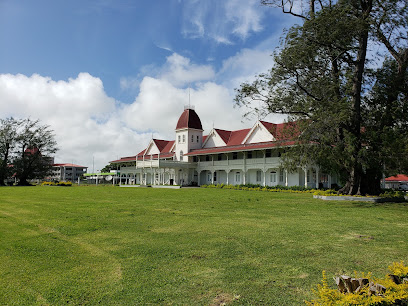
Friends Cafe
Discover the essence of Tongan hospitality and cuisine at Friends Cafe in Nuku'alofa, a delightful spot for coffee and local delicacies.
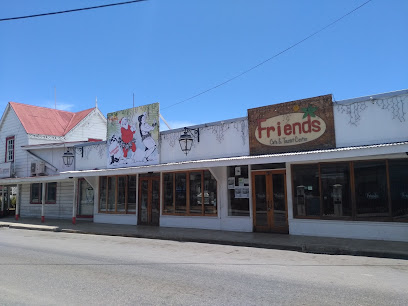
Cafe Escape
Discover the flavors of Tonga at Cafe Escape, a cozy restaurant in Nuku'alofa offering a delectable mix of local and international cuisine.

Billfish Bar and Restaurant
Experience the vibrant flavors of Tonga at Billfish Bar and Restaurant, where local seafood meets a lively atmosphere in Nuku'alofa.
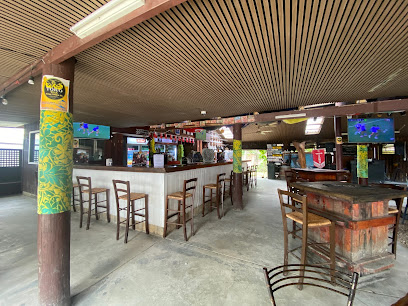
Waterfront Lodge
Discover the charm of Tonga at Waterfront Lodge, your serene retreat in Nuku'alofa with comfort, culture, and breathtaking views.
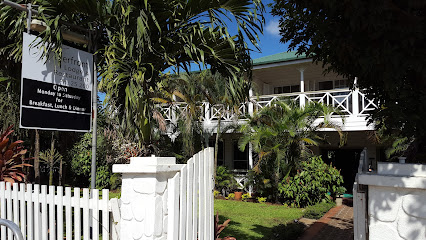
Chef Zero Restaurant
Experience the best of Tongan cuisine at Chef Zero Restaurant in Nuku'alofa, where every dish is crafted with passion and fresh local ingredients.
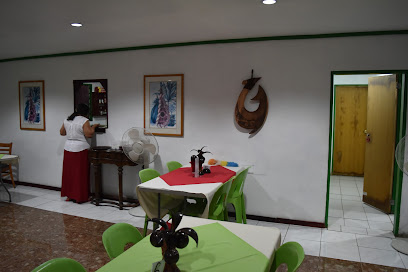
The TOP Restaurant and Lounge
Experience authentic Tongan cuisine at The TOP Restaurant and Lounge, where breathtaking views meet delightful flavors in Nuku'alofa.
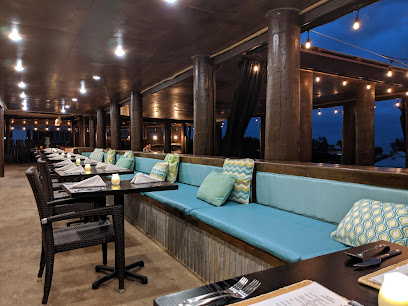
'Oholei Beach Resort
Discover the tranquil beauty and rich culture at 'Oholei Beach Resort in Lavengatonga, Tonga – the perfect tropical escape for every traveler.
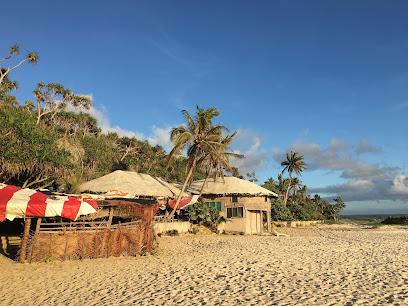
Ha'amonga 'a Maui Trilithon
Explore the ancient marvel of Ha'amonga 'a Maui Trilithon, a historical landmark that embodies Tonga's rich cultural heritage and stunning natural beauty.

Mum's Cafe Nukualofa
Discover the flavors of Tonga at Mum's Cafe in Nuku'alofa, where traditional dishes meet a friendly atmosphere for an unforgettable dining experience.
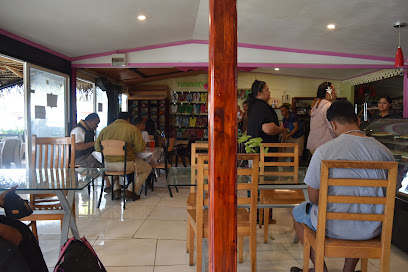
Little Italy Pizzeria Restaurant
Experience the true flavors of Italy at Little Italy Pizzeria, Nuku'alofa's beloved eatery for authentic Italian cuisine.
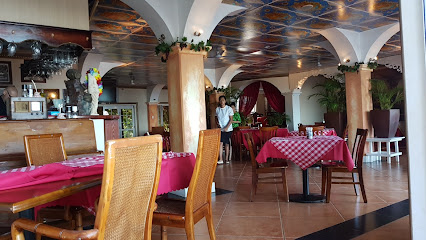
Lunarossa Deli
Discover the vibrant flavors of Tonga at Lunarossa Deli, the perfect takeout spot for a delightful culinary experience in Nuku'alofa.

Young’s Kitchen
Experience authentic Tongan cuisine at Young's Kitchen, a hidden gem in Nuku'alofa offering fresh local dishes and warm hospitality.
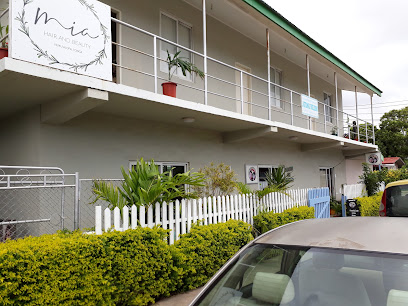
Local Phrases about Late Island
-
- HelloMalo e lelei
[mah-loh eh leh-leh] - GoodbyeNofo a
[noh-foh ah] - YesʻIo
['ee-oh] - NoʻIkai
['ee-kai] - Please/You're welcomeʻOfa atu
['oh-fah ah-too] - Thank youMālō
[mah-loh] - Excuse me/SorryFakamolemole
[fah-kah-moh-leh-moh-leh] - How are you?ʻEku ha koe?
['eh-koo hah koh-eh] - Fine. And you?Fefe. Pe koe?
[feh-feh, peh koh-eh?] - Do you speak English?Te u fai ha lea fakapālangi?
[teh oo fai hah lay-ah fah-kah-pah-lahn-gee?] - I don't understandTeu ke lava te tau.
[teh-oo keh lah-vah teh tah-oo.]
- HelloMalo e lelei
-
- I'd like to see the menu, pleaseKātaki au ke tuku ha meniu, fakamolemole.
[kah-tah-kee ow keh too-koo hah meh-nee-oo, fah-kah-moh-leh-moh-leh.] - I don't eat meatTe u fai ai e meʻa
[teh oo fai ai eh meh-ah] - Cheers!Mālo lelei!
[mah-loh leh-leh!] - I would like to pay, pleaseKātaki au ke totongi, fakamolemole.
[kah-tah-kee ow keh toh-tohn-gee, fah-kah-moh-leh-moh-leh.]
- I'd like to see the menu, pleaseKātaki au ke tuku ha meniu, fakamolemole.
-
- Help!Malō!
[mah-loh!] - Go away!Alu atu!
[ah-loo ah-too!] - Call the Police!Fonua ki he Pulisi!
[foh-noo-ah kee heh poo-lee-see!] - Call a doctor!Fonua ki he toktā!
[foh-noo-ah kee heh toh-k-tah!] - I'm lostKo au teu toʻo
[koh ow teh-oo toh-oh] - I'm illKo au teu mate
[koh ow teh-oo mah-teh]
- Help!Malō!
-
- I'd like to buy...Kātaki au ke fakaʻoʻo...
[kah-tah-kee ow keh fah-kah-oh-oh...] - I'm just lookingKo au teu fakaʻoʻo
[koh ow teh-oo fah-kah-oh-oh] - How much is it?ʻI he taʻu fakataha?
[ee heh tah-oo fah-kah-tah-hah?] - That's too expensiveKo e hiki lave
[koh eh hee-kee lah-veh] - Can you lower the price?Te u fakataha ʻi he totongi?
[teh oo fah-kah-tah-hah ee heh toh-tohn-gee?]
- I'd like to buy...Kātaki au ke fakaʻoʻo...
-
- What time is it?Koe hua te tau?
[koh-eh hoo-ah teh tah-oo?] - It's one o'clockKoe hua te tahi
[koh-eh hoo-ah teh tah-hee] - Half past (10)Maʻi he hau (ʻulu)
[mah-ee heh hah-oo (oo-loo)] - MorningPō
[poh] - AfternoonAhiahi
[ah-hee-ah-hee] - EveningPō
[poh] - YesterdayʻAho neke
[ah-hoh neh-keh] - TodayʻAho ni
[ah-hoh nee] - TomorrowʻAho apopo
[ah-hoh ah-poh-poh] - 1Tahi
[tah-hee] - 2Ua
[oo-ah] - 3Tolu
[toh-loo] - 4Fa
[fah] - 5Nima
[nee-mah] - 6Ono
[oh-noh] - 7Fitu
[fee-too] - 8Valu
[vah-loo] - 9Hiva
[hee-vah] - 10ʻUlu
[oo-loo]
- What time is it?Koe hua te tau?
-
- Where's a/the...?ʻI he fekau?
[ee heh feh-kah-oo?] - What's the address?Koe he tahaʻu fakafetaʻi?
[koh-eh heh tah-hah-oo fah-kah-feh-tah-ee?] - Can you show me (on the map)?Te u fakamaheni au (ʻi he mapa)?
[teh oo fah-kah-mah-heh-nee ow (ee heh mah-pah)?] - When's the next (bus)?ʻI he hua te tau (fusi)?
[ee heh hoo-ah teh tah-oo (foo-see)?] - A ticket (to ....)Ha taʻu (ki ...)
[hah tah-oo (kee ...)]
- Where's a/the...?ʻI he fekau?
History of Late Island
-
Late Island, part of the Vava'u group in Tonga, has been inhabited for centuries by the Lapita people, who arrived around 1000 BCE. They were skilled navigators and potters, leaving behind intricate pottery designs that are still studied today.
-
Late Island was first sighted by Europeans in 1781 when the Spanish explorer Francisco Antonio Mourelle anchored near the island. His discovery marked the beginning of Late Island's interaction with the Western world.
-
By the 19th century, Late Island had become an integral part of the Tongan Kingdom. The islanders were influenced by the centralized Tongan governance, which helped unify the scattered islands under a cohesive cultural and political system.
-
Late Island is a stratovolcano, and its volcanic activity has played a significant role in shaping the island's landscape and history. The most recent eruptions occurred in the 18th and 19th centuries, which led to temporary evacuations and reshaped parts of the island.
-
During World War II, Tonga, including Late Island, played a strategic role in the Pacific theater. The island was occasionally used as a lookout point and resupply station by Allied forces, although it saw no direct combat.
-
In recent decades, Late Island has become a focus of conservation efforts. The island's unique flora and fauna, including several endemic bird species, have made it an important site for environmental protection and scientific research.
-
Late Island remains rich in Tongan culture, from traditional music and dance to local crafts and customs. The island is known for its community festivals, which celebrate its storied past and vibrant cultural heritage.
Late Island Essentials
-
Late Island is located in the Vava'u group of islands in Tonga. The most common way to reach Late Island is by flying into Vava'u's main airport, Lupepau'u International Airport (VAV), from Nuku'alofa, the capital of Tonga. From there, you can charter a boat or join a guided tour to reach Late Island, which is approximately 55 kilometers southwest of Vava'u. Boat trips can be arranged through local tour operators or hotels in Neiafu, the main town in Vava'u.
-
Transportation on Late Island is limited due to its small size and rugged terrain. Most visitors explore the island on foot or by boat. For those staying in Vava'u and planning day trips, local boat charters are available. It's advisable to arrange transportation in advance, particularly during peak tourist seasons. There are no car rentals or public transport services on Late Island itself.
-
The official currency of Tonga is the Tongan Paʻanga (TOP). Credit cards are accepted in some establishments in Vava'u, but Late Island is more remote, and cash is preferred. It's recommended to carry sufficient cash, as there are no ATMs or banking facilities on Late Island. Ensure you exchange currency or withdraw cash in Neiafu before heading to Late Island.
-
Late Island is generally safe for tourists, but it's always wise to take standard precautions. There are no specific high-crime areas, but it's important to secure your belongings and avoid leaving valuables unattended. Be cautious when exploring remote areas and marine environments. It's also advisable to have a local guide or inform someone of your plans when venturing into less-traveled parts of the island.
-
In case of emergency on Late Island, immediate assistance may be limited due to its remote location. For medical emergencies, contact local tour operators or hotel staff who can help coordinate evacuation to medical facilities in Vava'u. It's essential to have travel insurance that covers medical evacuations. For minor health issues, carry a basic first aid kit and necessary medications. Emergency contact numbers for local authorities and tour operators should be kept handy.
-
Fashion: Do wear lightweight, breathable clothing suitable for tropical climates. Swimwear should be reserved for beaches and not worn in villages. Religion: Do respect local customs and traditions. Dress modestly when visiting any religious sites. Public Transport: Public transport is not available on Late Island. Use local boat charters or guided tours for transportation. Greetings: Do greet locals with a friendly 'Malo e lelei' (Hello). A smile and a handshake are appreciated. Eating & Drinking: Do try local Tongan dishes and accept food graciously when offered. Don't refuse hospitality, as it is considered impolite.
-
To experience Late Island like a local, engage with the community and participate in traditional activities such as kava ceremonies and fishing trips. Explore the island's natural beauty by hiking to the volcanic crater or snorkeling in the pristine waters. Visiting local markets in Vava'u before your trip to Late Island can provide insight into Tongan culture and allow you to purchase fresh produce and handmade crafts.
Nearby Cities to Late Island
-
Things To Do in Ha'apai
-
Things To Do in Nuku'alofa
-
Things To Do in Foa
-
Things To Do in Pangai
-
Things To Do in Vava'u
-
Things To Do in Ha'ano
-
Things To Do in Kolovai
-
Things To Do in Eua
-
Things To Do in Levuka
-
Things To Do in Nausori
-
Things To Do in Suva
-
Things To Do in Rakiraki
-
Things To Do in Savusavu
-
Things To Do in Sigatoka
-
Things To Do in Labasa







